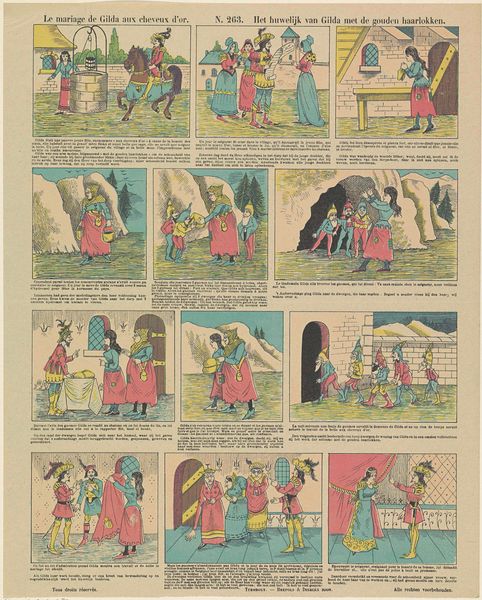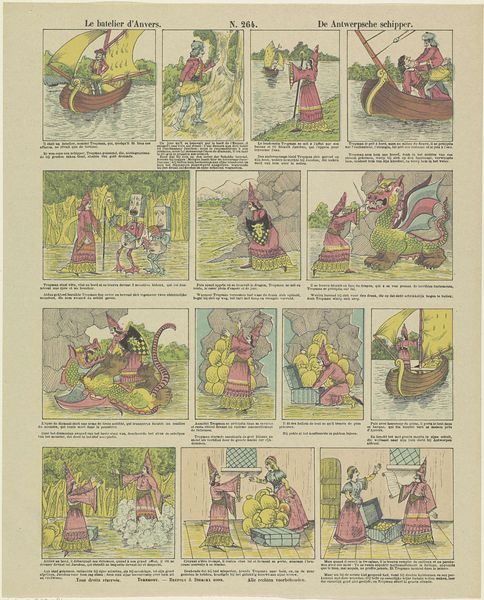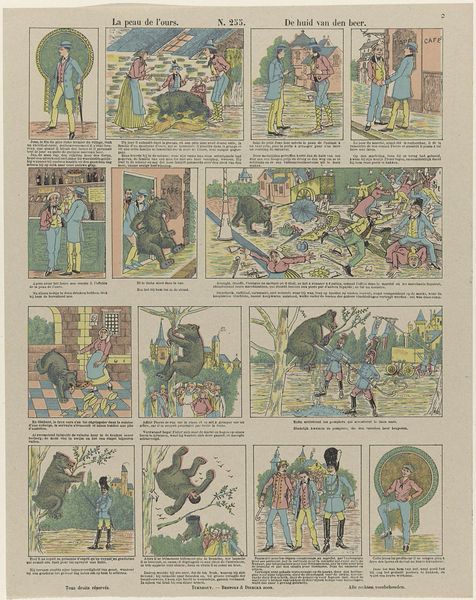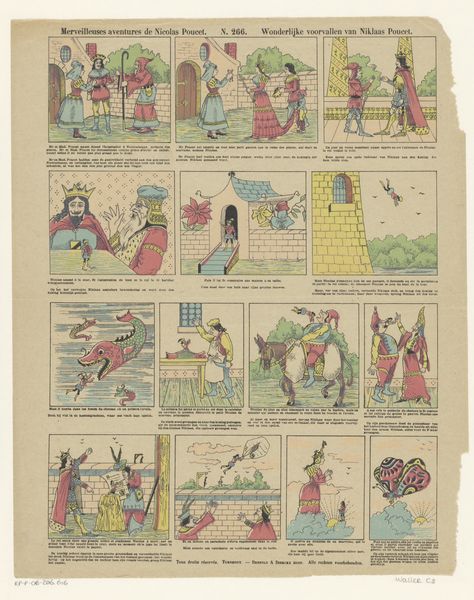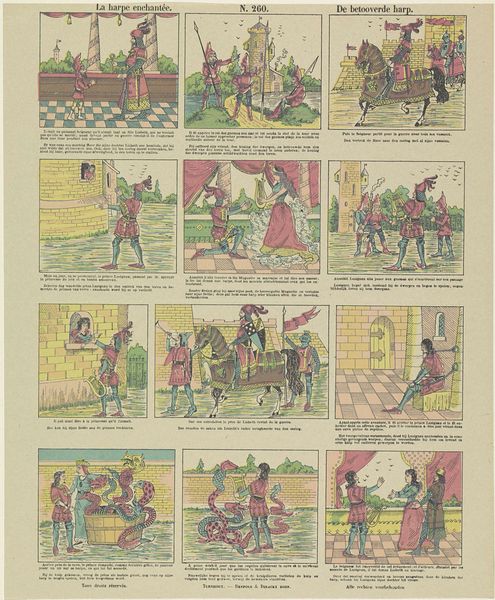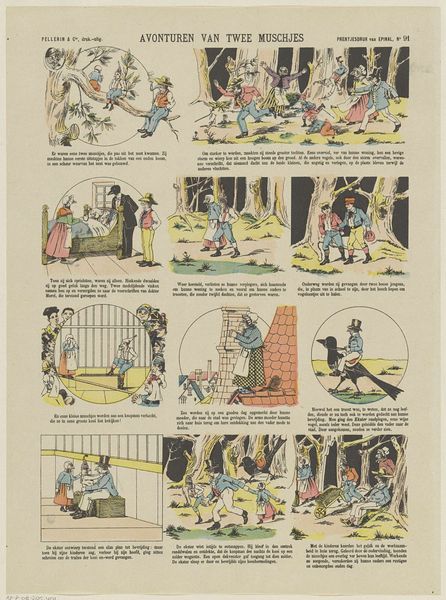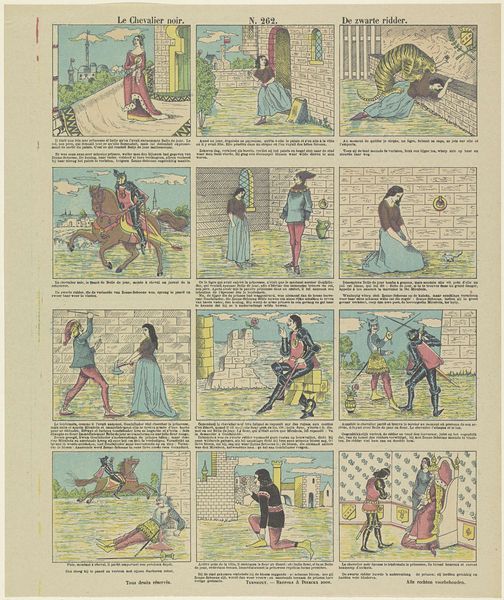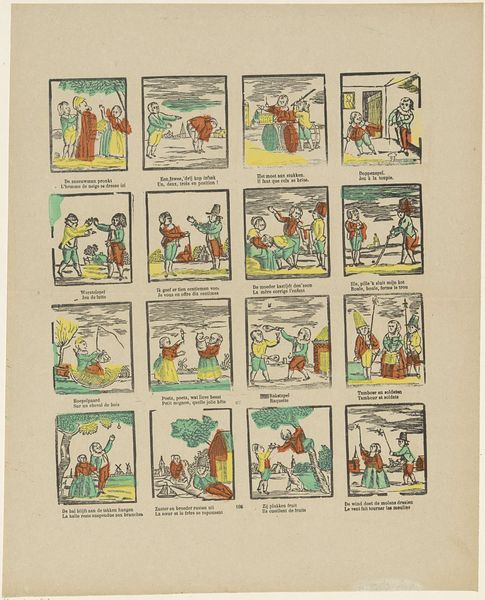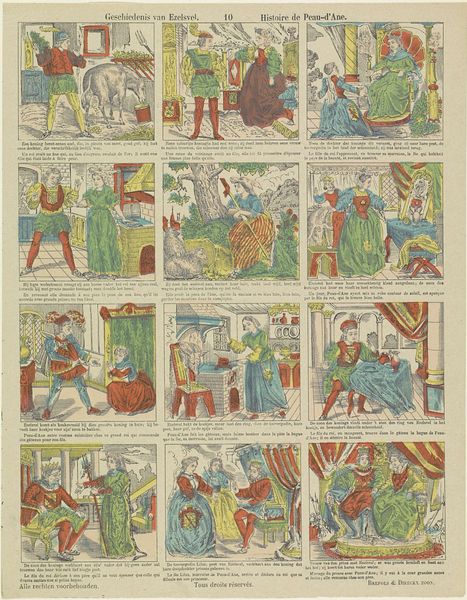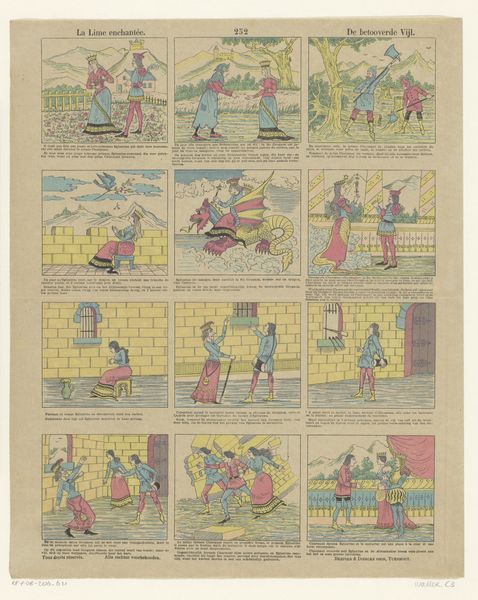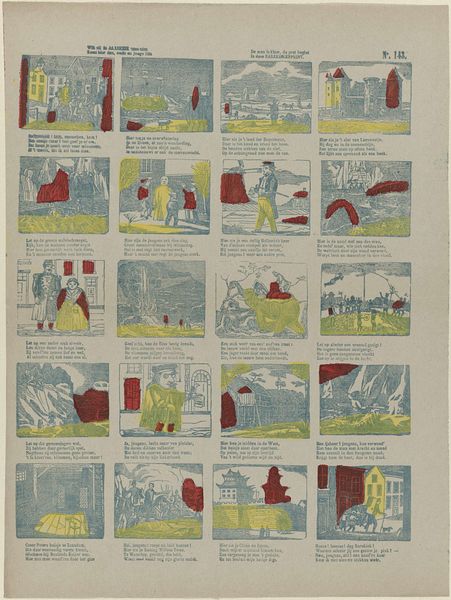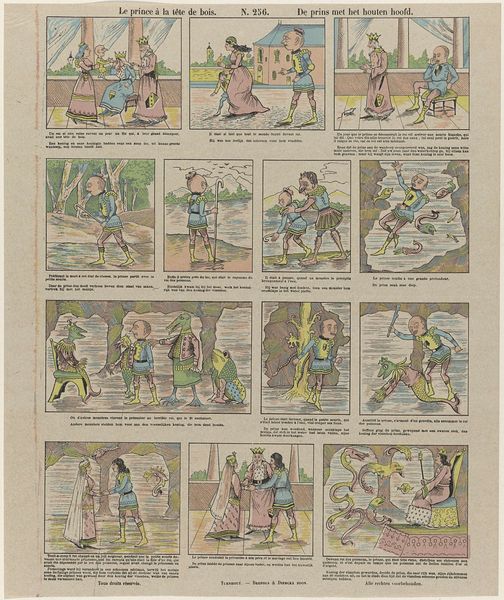
#
medieval
#
narrative-art
#
comic strip
# print
#
folk-art
#
comic
#
history-painting
Dimensions: height 379 mm, width 306 mm
Copyright: Rijks Museum: Open Domain
Curator: Here we have a print titled "La vengeance du diable / De wraak van den duivel", or "The Revenge of the Devil," created sometime between 1833 and 1911 by Brepols & Dierckx Zoon. It’s currently housed at the Rijksmuseum. What are your initial impressions? Editor: It has an intriguing formal composition. The panels, arranged in a grid, seem to promise a narrative, perhaps a moral tale judging from the devilish undertones of the title, but the overall effect feels somewhat disjointed due to the work's age and unique framing. The faded colors add to a medieval storybook aesthetic. Curator: Precisely. The format immediately suggests the mass-produced, designed for wide distribution, perhaps even as part of a larger publication intended for children. The deliberate rendering suggests it was relatively cheap, focused more on quantity than on sophisticated artistic technique. This type of sequential art blurs lines between fine art and printed ephemera. Editor: Yes, there is a definite emphasis on narrative structure, moving from panel to panel creates a distinct temporal experience, almost cinematic in its unfolding. However, if you remove the devil from the story, it's actually the magician character and the layout of space around him which seems to play a role, leading me to think that it may use early sequential techniques to play with symbolism through image alignment. Curator: That's a very interesting approach. Looking at it from the production standpoint, I would say the paper itself, and how it bears the image, plays a large part. It provides evidence of an interesting period in the democratization of storytelling. It raises questions about the artist's audience and what materials were accessible and economically viable at the time of its production. Editor: Ultimately, viewing “The Revenge of the Devil,” has underscored that analyzing its structure creates meaning of its time, bridging high art, popular storytelling, and commercial reproducibility, while also using art for historical social commentary. Curator: I agree. It truly captures an unusual period for understanding media production during its specific point in time. Thanks to accessible printing technologies.
Comments
No comments
Be the first to comment and join the conversation on the ultimate creative platform.
